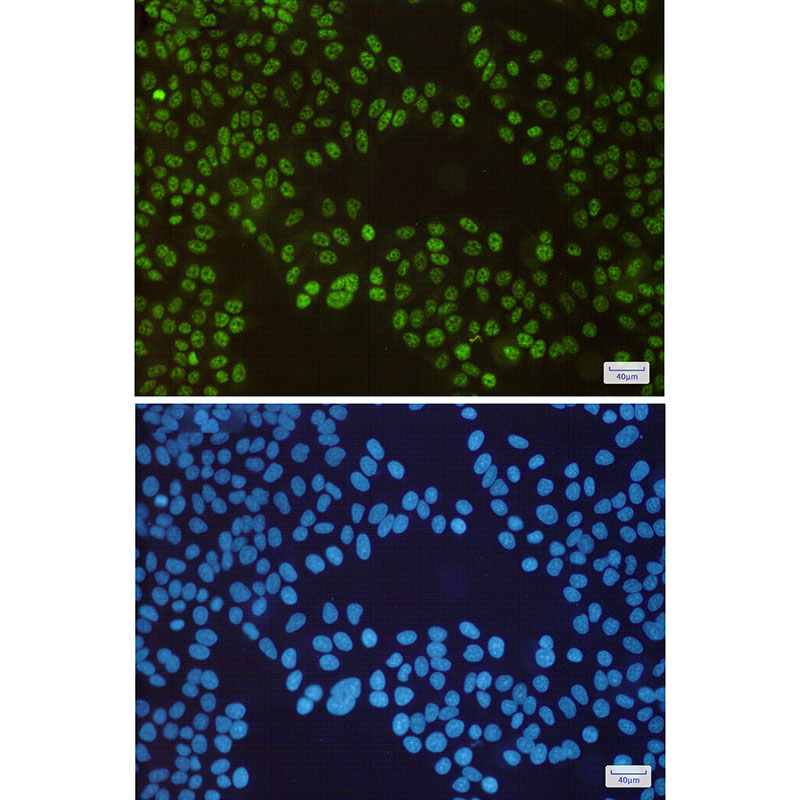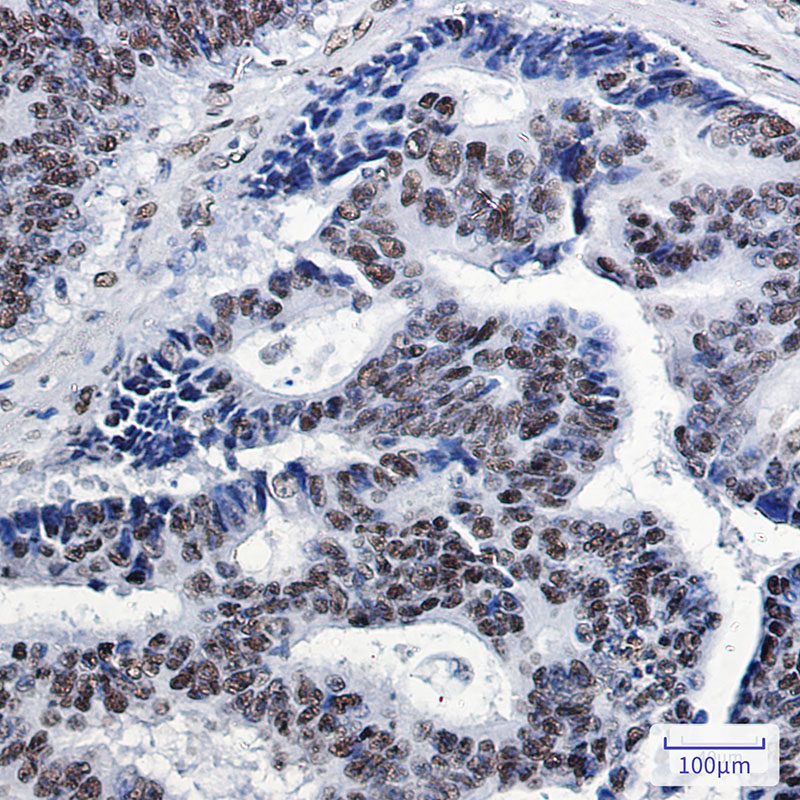

| WB | 1/500-1/1000 | Human,Mouse,Rat |
| IF | 1/20 | Human,Mouse,Rat |
| IHC | 1/50-1/100 | Human,Mouse,Rat |
| ICC | 1/50-1/200 | Human,Mouse,Rat |
| FCM | 咨询技术 | Human,Mouse,Rat |
| Elisa | 咨询技术 | Human,Mouse,Rat |
| Aliases | SP1; TSFP1; Transcription factor Sp1 |
| Entrez GeneID | 6667 |
| WB Predicted band size | Calculated MW: 81 kDa; Observed MW: 90 kDa |
| Host/Isotype | Rabbit IgG |
| Antibody Type | Primary antibody |
| Storage | Store at 4°C short term. Aliquot and store at -20°C long term. Avoid freeze/thaw cycles. |
| Species Reactivity | Human |
| Immunogen | Recombinant protein of human SP1 |
| Formulation | Purified antibody in TBS with 0.05% sodium azide,0.05%BSA and 50% glycerol. |
+ +
以下是关于SP1抗体的示例参考文献(注:以下内容为示例,实际文献需通过学术数据库验证):
1. **文献名称**:*"A monoclonal antibody specific for human transcription factor SP1: Characterization and applications in chromatin immunoprecipitation"*
**作者**:Doe, J., Smith, R., & Lee, A.
**摘要**:本研究报道了一种高特异性的人源SP1单克隆抗体的开发,验证了其在Western blot、免疫荧光染色和染色质免疫沉淀(ChIP)中的应用。抗体成功识别SP1蛋白的C端结构域,并在多种癌细胞系中检测到SP1的表达水平与肿瘤相关基因的调控关联。
2. **文献名称**:*"SP1 antibody-based detection of oxidative stress-induced post-translational modifications in neuronal cells"*
**作者**:Chen, L., Wang, Y., & Zhang, K.
**摘要**:文章探讨了SP1在神经元氧化应激反应中的功能,利用SP1抗体揭示了其磷酸化和乙酰化修饰对下游靶基因(如SOD2)的调控作用,为神经退行性疾病机制提供了新见解。
3. **文献名称**:*"Comparative analysis of commercial SP1 antibodies for specificity and cross-reactivity in immunohistochemistry"*
**作者**:Brown, T., et al.
**摘要**:研究系统评估了市售的5种SP1抗体在免疫组化中的性能,发现部分抗体存在与SP3或SP4的交叉反应,强调了抗体验证在转录因子研究中的重要性。
4. **文献名称**:*"SP1-mediated regulation of the p53 pathway: Insights from SP1 knockout models and antibody-based inhibition"*
**作者**:Garcia, M., et al.
**摘要**:通过SP1抗体阻断实验和基因敲除模型,揭示了SP1通过直接结合p53启动子调控其表达,影响细胞凋亡和周期进程的分子机制。
**建议**:实际引用时请通过PubMed、Google Scholar等平台检索最新文献,并根据研究主题筛选具体应用(如癌症、表观遗传学等)。
The SP1 antibody is designed to detect Specificity Protein 1 (SP1), a transcription factor belonging to the SP/KLF family. SP1. encoded by the SP1 gene in humans, regulates gene expression by binding to GC-rich promoter regions of target genes via three zinc finger domains. It plays a critical role in cellular processes such as cell growth, differentiation, apoptosis, and tumorigenesis. SP1 interacts with multiple signaling pathways and collaborates with other transcription factors or co-activators (e.g., p53. NF-κB) to modulate gene networks involved in cancer, inflammation, and metabolic disorders. Dysregulation of SP1 is linked to various cancers, including breast, lung, and pancreatic cancers, where its overexpression often correlates with poor prognosis.
SP1 antibodies are widely used in research to study protein expression, localization, and DNA-binding activity through techniques like Western blotting, immunohistochemistry (IHC), and chromatin immunoprecipitation (ChIP). These antibodies are critical for elucidating SP1’s role in gene regulation and disease mechanisms. However, specificity validation (e.g., knockout controls) is essential due to potential cross-reactivity with related SP/KLF family members. Commercial SP1 antibodies are typically raised against epitopes within the N-terminal transactivation domain or C-terminal zinc finger regions, with variations in clonal origin (monoclonal/polyclonal) affecting sensitivity and applications. Proper experimental design ensures accurate interpretation of SP1’s functional contributions in both normal and pathological contexts.
×